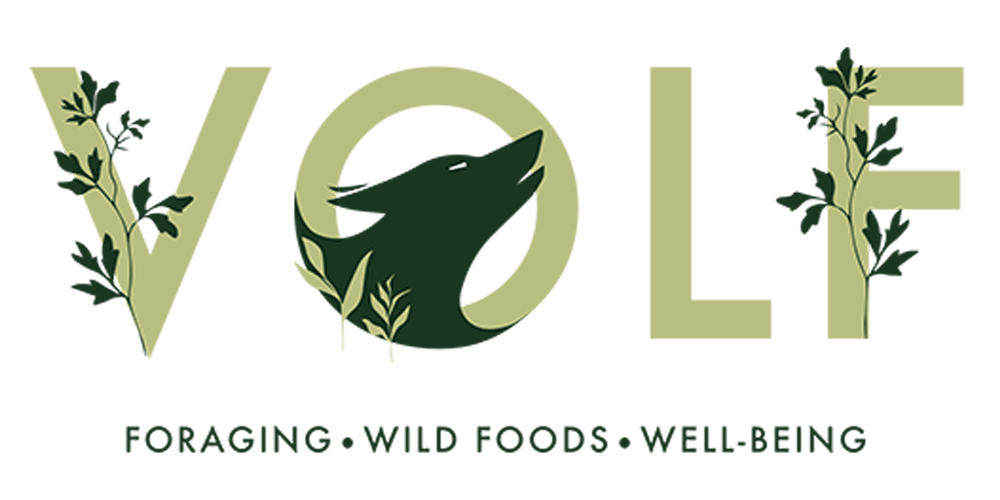Black Locust
How To ID Me And What I’m Good For?
My ID Features:
Flowers
Flowers
Spines of a young tree
Leaf
Black Locust
Latin Name - Robinia Pseudoacacia
Common Names - Black Locust, False Acacia, Common Locust, Green Locust, Pea Flower Locust, White Locust, Yellow Locust.
Family - Fabaceae.
Season - Late spring or Early Summer (You have to catch the flowers at the right time, usually falling between these two seasons).
Edible bits - The flowers. Some say the peas are also edible. But they’re so small, it’s not worth it in our opinion. Not something we’ve tried.
Habitat - This is a non-native tree and not something we’ve found growing outside of urban areas. Most recently, finding it at boundaries to housing developments. Hopeful we don’t find it ‘in the wild’, as it’s considered invasive in other parts of the world.
Possible Confusion - Said to resemble Honey Locust [Gleditsia triacanthos], has dense thickets of thorns. Or the Japanese Pagoda tree [Styphnolobium japonicum], which lacks any spines at all. We haven’t as of yet come across either of these trees. Given all of the above dwell in urban environments, it is feasible to confuse species. It would be best to look through the internet for these two species, as the visual appearance is quite discernable.
Description - Black locust trees are native to the southeastern United States, though considered invasive in the north. That said, fortunately we haven’t seen them here outside of parks or residential areas. I have a love affair with the Fabaceae family, they’re one of my favourites! Growing from incredibly small plants to large trees, they’re stunning. We’ve generally found Black Locust blooming around the same time as late spring roses. But, unlike roses, their season is incredibly short. Only lasting a few weeks in their prime. Their flavour tastes like sweet peas and their scent is reminiscent of jasmine. This is perhaps one of our favourite foraged flowers and easily spottable with their giant blooms of beautiful white flowers hanging like grapes. They make excellent preserves, ferments and just simply eaten as they are. Only flowers themselves are edible as all other parts of the tree are poisonous. We have read a few reports on the peas themselves being edible. “Shelled seeds are safe to harvest from summer through fall, and are edible both raw and boiled”. They’re so small it’s not something we’ve tried before. You can view our Black Locust Lemonade here.
Physical Characteristics -
Bark
The bark is a reddish-black when young and mostly gray in age. Sometimes tinged with red or orange in the grooves. In older specimens it is deeply furrowed with grooves and ridges running up and down the trunk.
Branches
The branches are typically ‘zig-zaggy’ and may have ridges and grooves, they can also be round. When young, they are first coated with white silvery down; this soon disappears, and they become pale green and afterward reddish or greenish brown.
Spines
They may or may not be present on young trees. Confusing! Black locust is quite variable in the number of spines present, as some trees are densely prickly and other trees have no prickles at all. The spines typically remain on the tree until the young thin bark to which they are attached is replaced by the thicker mature bark. Their spikes are dark purple in colour.
The leaves
Are compound, meaning that each leaf contains many smaller leaf like structures called leaflets, which are roughly paired on either side of the stem. There is typically one leaflet at the tip, and the leaves are alternately arranged on the stem. They look VERY pea like! The leaves appear relatively late in spring. The leaf color of the fully grown leaves is a dull dark green above and paler beneath. The leaves are NOT edible.
The flowers
Usually open in May to June, after the leaves have developed. They are arranged in loose drooping clumps which are typically 10–20 cm long. The flowers themselves are cream-white with a pale yellow blotch in the center. Each flower is perfect, having both stamens and a pistil .
The fruit
Is a typical legume fruit, being a flat and smooth pea-like pod. The fruit usually contains 4–8 seeds. The seeds are dark orange brown with irregular markings. They ripen late in autumn and hang on the branches until early spring.
Medicinal Qualities - There seem to be many purported health benefits. Of which we would direct you here to research the literature within.
Harvesting Sustainability - Only take what you need. Using scissors to cut away the flowers. Pollinators love this tree!
Saftey Note - Be careful to pick away from human or animal contaminants.
Never munch on a hunch! Volf takes no responsibility for anything consumed.





